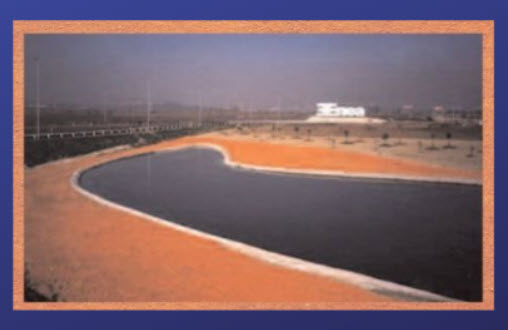What is the function of HDPE lining?

In today's world, where environmental conservation and infrastructure protection are paramount, high-density polyethylene (HDPE) lining plays a crucial role in safeguarding various structures and ecosystems. This comprehensive blog explores the multifaceted function of HDPE lining, delving into its applications, benefits, installation methods, and environmental impact.
1. Introduction to HDPE Lining
HDPE lining is a versatile geomembrane material widely used for lining various structures and containment systems to prevent leakage, corrosion, and environmental contamination. Composed of high-density polyethylene resin, HDPE lining offers exceptional durability, chemical resistance, and flexibility, making it suitable for diverse applications across industries such as mining, agriculture, wastewater management, and environmental protection.
2. Applications of HDPE Lining
HDPE lining finds extensive applications in a wide range of infrastructure projects and environmental protection initiatives, including:
- Landfills and waste containment systems: HDPE lining serves as a barrier to prevent leachate seepage into the surrounding soil and groundwater, thus minimizing environmental contamination.
- Water storage and distribution systems: HDPE lining is used in reservoirs, ponds, and water tanks to prevent water loss through seepage and ensure reliable water storage and distribution.
- Mining and industrial containment: HDPE lining is employed in tailings dams, ponds, and chemical storage facilities to contain hazardous materials and prevent environmental pollution.
- Agriculture and aquaculture: HDPE lining is utilized in irrigation canals, fish ponds, and agricultural reservoirs to prevent water seepage and optimize water management practices.
- Environmental remediation: HDPE lining is deployed in contaminated sites and hazardous waste storage facilities to contain pollutants and prevent their migration into the surrounding environment.
3. Benefits of HDPE Lining
The use of HDPE lining offers numerous benefits, including:
- Superior chemical resistance: HDPE lining is resistant to a wide range of chemicals, acids, and solvents, ensuring long-term durability and performance in harsh environments.
- Excellent flexibility and weldability: HDPE lining can be fabricated into custom shapes and sizes and easily welded onsite, enabling seamless installation and adaptability to complex geometries.
- High tensile strength and puncture resistance: HDPE lining provides robust protection against punctures, tears, and abrasions, ensuring reliable containment and structural integrity.
- Low permeability: HDPE lining offers low permeability to gases and liquids, minimizing leakage and seepage, and enhancing environmental protection.
- Longevity and sustainability: HDPE lining has a long service life of up to 50 years or more, reducing the need for frequent replacements and contributing to sustainable infrastructure development.
4. Installation Methods of HDPE Lining
HDPE lining can be installed using various methods, including:
- Geomembrane liner installation: HDPE lining is installed as a continuous geomembrane liner over the surface or within the containment structure using heat welding, extrusion welding, or adhesive bonding techniques.
- Anchor trench installation: HDPE lining is anchored securely using anchor trenches, geotextile wraps, or ballast materials to prevent uplift and ensure stability in high wind or water pressure conditions.
-
Quality assurance and testing: HDPE lining installation is subjected to rigorous quality assurance and testing procedures, including seam testing, leak detection, and integrity testing, to verify performance and compliance with regulatory standards.
5. Environmental Impact of HDPE Lining
HDPE lining plays a significant role in environmental protection and conservation by:
- Preventing soil and groundwater contamination: HDPE lining acts as a barrier to prevent leachate and pollutants from entering the soil and groundwater, safeguarding ecosystems and human health.
- Preserving water resources: HDPE lining minimizes water loss through seepage and evaporation, ensuring efficient water storage and distribution in water-stressed regions.
- Mitigating environmental risks: HDPE lining helps mitigate environmental risks associated with industrial activities, mining operations, and hazardous waste storage, reducing the impact on surrounding ecosystems and communities.
6. Conclusion
In conclusion, HDPE lining serves as a critical infrastructure solution for protecting structures, preserving the environment, and ensuring sustainable development across various industries. Its versatility, durability, and environmental benefits make it an indispensable component of modern infrastructure projects and environmental protection initiatives. As we continue to confront global challenges related to environmental conservation and infrastructure sustainability, the function of HDPE lining remains paramount in shaping a resilient and environmentally conscious future.


